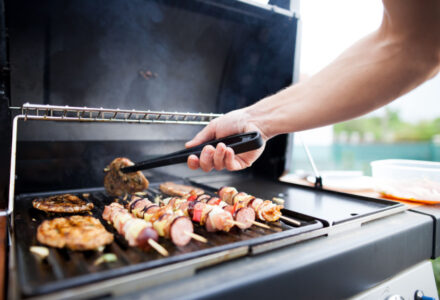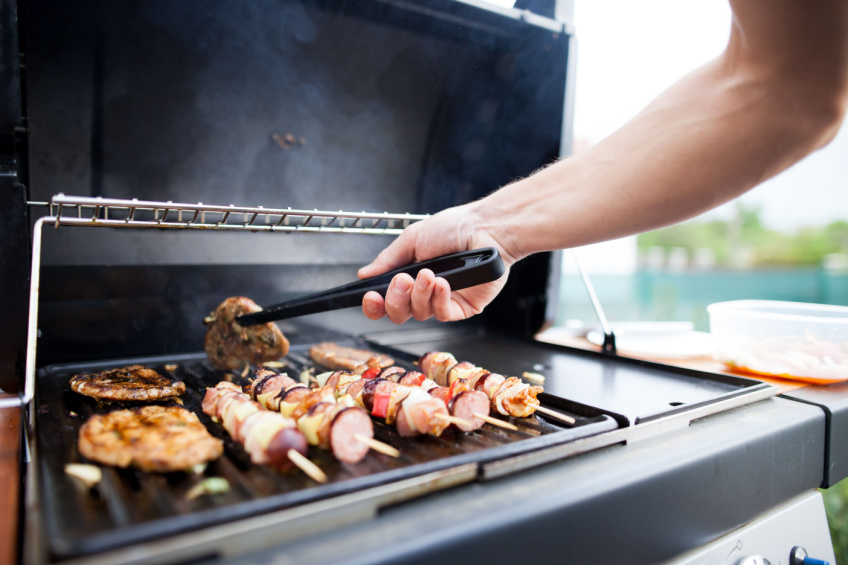
The standard grill size is a common question asked by homeowners who are in the market for a new grill or looking to upgrade their current one.
The size of the grill is an important factor to consider, as it can affect how much food you can cook at once and how much space it will take up on your patio or deck.
In this article, we will explore the standard grill sizes available on the market and what factors to consider when choosing the right size for your needs.
Grills come in a variety of sizes, from small portable models to large, professional-grade appliances.
The standard grill size typically refers to the cooking surface area, measured in square inches.
The most common sizes available are 200-400 square inches for small grills, 400-600 square inches for medium grills, and 600-900 square inches for large grills.
However, it’s important to note that these are just general guidelines and the actual size of the grill can vary depending on the manufacturer and model.
Understanding the different sizes available and what factors to consider when choosing a grill size can help you make an informed decision and find the right grill for your needs.
Standard Grill Size Dimensions
When it comes to purchasing a grill, it is important to consider the size of the grill.
The standard grill size varies depending on the type of grill.
In this section, we will discuss the standard grill size dimensions for gas grills, charcoal grills, portable grills, and built-in grills.
Gas Grills
Gas grills are one of the most popular types of grills.
The standard size for a gas grill is between 400 and 600 square inches of cooking space.
This size is suitable for most families and can cook up to 20 burgers at once.
However, some gas grills can be as large as 1,000 square inches of cooking space.
Charcoal Grills
Charcoal grills are known for their smoky flavor and are a favorite among grill enthusiasts.
The standard size for a charcoal grill is between 200 and 400 square inches of cooking space.
This size is suitable for small families and can cook up to 10 burgers at once.
However, some charcoal grills can be as large as 800 square inches of cooking space.
Portable Grills
Portable grills are perfect for camping, tailgating, and picnics.
The standard size for a portable grill is between 100 and 200 square inches of cooking space.
This size is suitable for small families and can cook up to 6 burgers at once.
However, some portable grills can be as large as 300 square inches of cooking space.
Built-In Grills
Built-in grills are designed to be a permanent fixture in an outdoor kitchen.
The standard size for a built-in grill is between 400 and 1,000 square inches of cooking space.
This size is suitable for large families and can cook up to 40 burgers at once.
However, some built-in grills can be as large as 1,500 square inches of cooking space.
In conclusion, the standard grill size varies depending on the type of grill.
When purchasing a grill, it is important to consider the size of the grill and the needs of your family.
Factors Influencing Grill Size
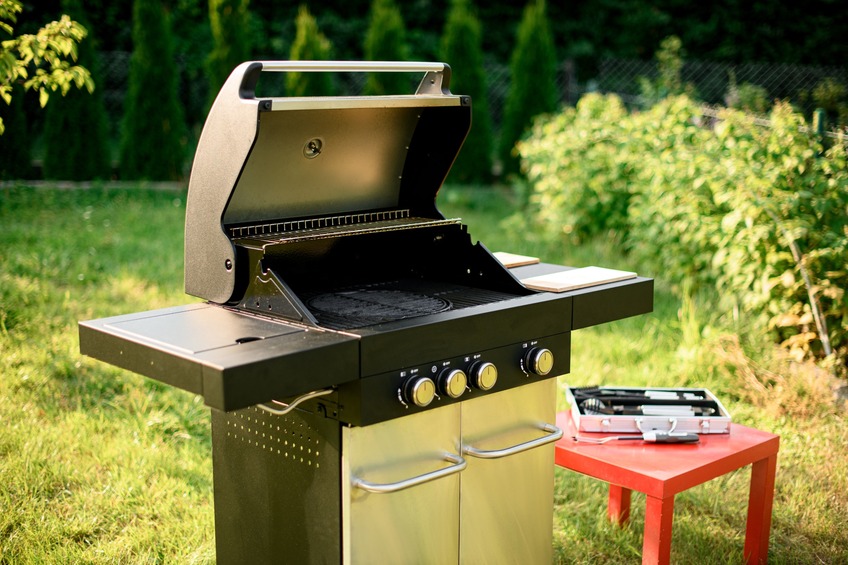
When choosing a grill, it is important to consider the factors that influence the size of the grill.
These factors can help determine the appropriate size for your needs.
Cooking Surface Area
One of the most important factors to consider when choosing a grill size is the cooking surface area.
The cooking surface area refers to the amount of space available for cooking food on the grill.
A larger cooking surface area is ideal for those who plan to cook for a large number of people or want to cook multiple items at once.
Grill Usage
Another factor to consider is how often the grill will be used.
If the grill will be used frequently, it may be beneficial to choose a larger size to accommodate for future use.
However, if the grill will only be used occasionally, a smaller size may be more appropriate.
Space and Location
The available space and location for the grill is also an important consideration.
A larger grill may not be suitable for those with limited outdoor space or those who live in apartments or condos.
It is important to measure the available space before purchasing a grill to ensure that it will fit comfortably in the desired location.
Overall, the size of the grill should be chosen based on the individual’s specific needs and preferences.
By considering factors such as cooking surface area, grill usage, and space and location, individuals can make an informed decision when choosing the appropriate size for their needs.
Grill Size Comparison
Average Sizes by Grill Type
Grills come in different sizes and shapes, and their sizes vary based on the type of grill. Here are the average sizes of some popular types of grills:
- Gas Grills: The average size of a gas grill is around 400-500 square inches of cooking area. However, larger models can have up to 1000 square inches of cooking area.
- Charcoal Grills: The average size of a charcoal grill is around 200-400 square inches of cooking area. However, larger models can have up to 800 square inches of cooking area.
- Electric Grills: The average size of an electric grill is around 150-200 square inches of cooking area. However, larger models can have up to 400 square inches of cooking area.
Grill Size vs Cooking Capacity
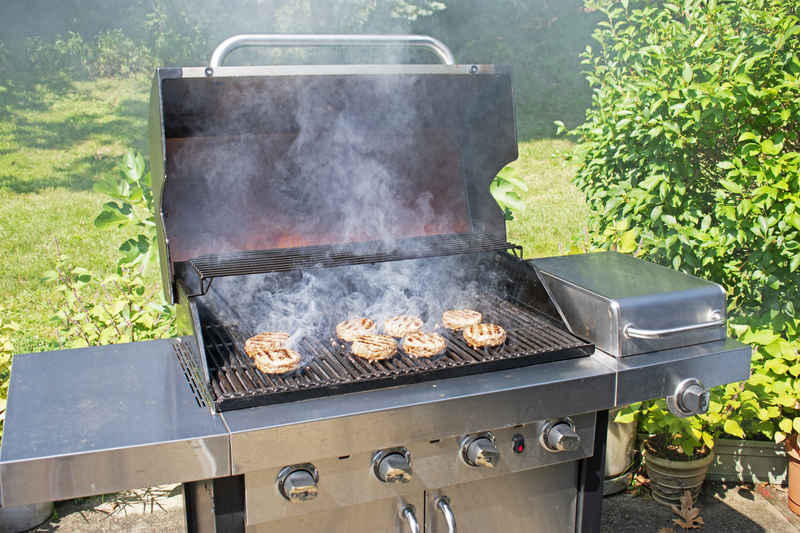
Grill size is not the only factor that determines the cooking capacity of a grill.
Other factors such as the number of burners, the shape of the grill, and the distance between the grates and the burners also affect the cooking capacity.
For example, a gas grill with a larger cooking area may have a higher cooking capacity than a smaller gas grill with the same number of burners.
Similarly, a charcoal grill with a deeper firebox may have a higher cooking capacity than a shallower charcoal grill with the same cooking area.
In conclusion, when choosing a grill, it’s important to consider both the size and the cooking capacity of the grill.
The size of the grill determines how much space it will take up on your patio or deck, while the cooking capacity determines how much food you can cook at once.
Selecting the Right Grill Size
When it comes to selecting the right grill size, there are a few key factors to consider.
These factors include personal needs assessment, space considerations, and budget constraints.
Personal Needs Assessment
Before selecting a grill size, it is important to assess personal needs.
Consider the number of people that will be using the grill on a regular basis, as well as the types of food that will be cooked.
If the grill will be used for large gatherings or to cook large cuts of meat, a larger grill size may be necessary.
On the other hand, if the grill will only be used for small meals or for a few people, a smaller grill may be sufficient.
Space Considerations
Another important factor to consider when selecting a grill size is space.
Measure the area where the grill will be placed to ensure that the chosen grill will fit comfortably.
It is also important to consider the amount of space needed for storage and preparation.
If space is limited, a smaller grill may be necessary.
Budget Constraints
Finally, budget constraints should also be considered when selecting a grill size.
Larger grills with more features and capabilities tend to be more expensive than smaller, basic models.
Determine a budget before beginning the search for a grill and stick to it.
It is possible to find a grill that meets personal needs and space considerations while staying within budget.
By considering personal needs assessment, space considerations, and budget constraints, it is possible to select the right grill size for any situation.
Industry Standards and Regulations
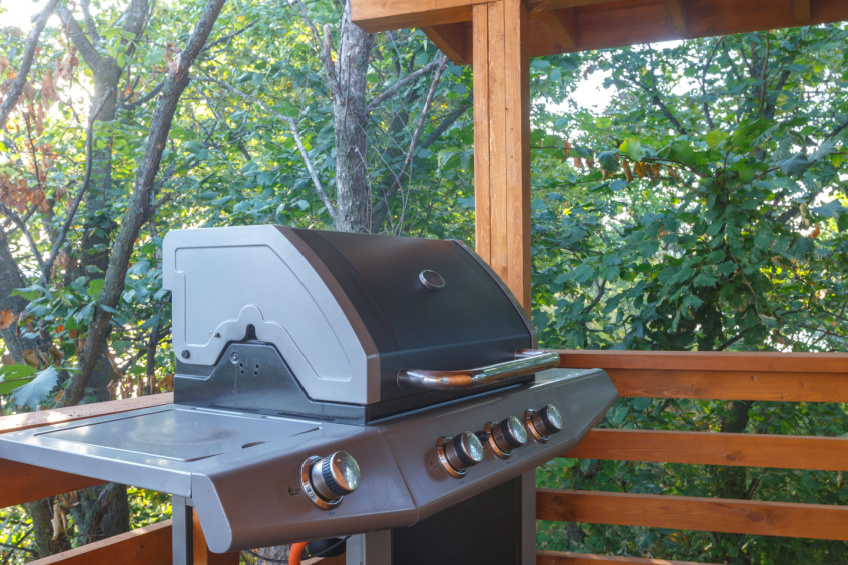 When it comes to grill size, there are industry standards and regulations that manufacturers must follow.
When it comes to grill size, there are industry standards and regulations that manufacturers must follow.
In the United States, the National Fire Protection Association (NFPA) sets guidelines for outdoor cooking appliances, including grills.
According to NFPA 1: Fire Code, outdoor cooking appliances must be located at least 10 feet away from combustible construction.
This includes buildings, structures, and combustible materials such as trees and shrubs.
Additionally, the NFPA recommends that the grill be placed on a non-combustible surface such as concrete or brick.
Bottom Line – What is the Standard Grill Size?
In terms of grill size, there are no specific regulations that dictate the dimensions of a standard grill.
However, manufacturers typically produce grills within a certain range of sizes to meet consumer demand.
The most common sizes for gas grills are 24, 30, and 36 inches, while charcoal grills are typically smaller, ranging from 18 to 22 inches.
It’s important to note that grill size should be chosen based on the needs of the user.
A larger grill may be necessary for those who frequently entertain or have a large family, while a smaller grill may be more suitable for those with limited outdoor space or who grill infrequently.
Ultimately, the size of the grill should be chosen based on individual needs and preferences.

